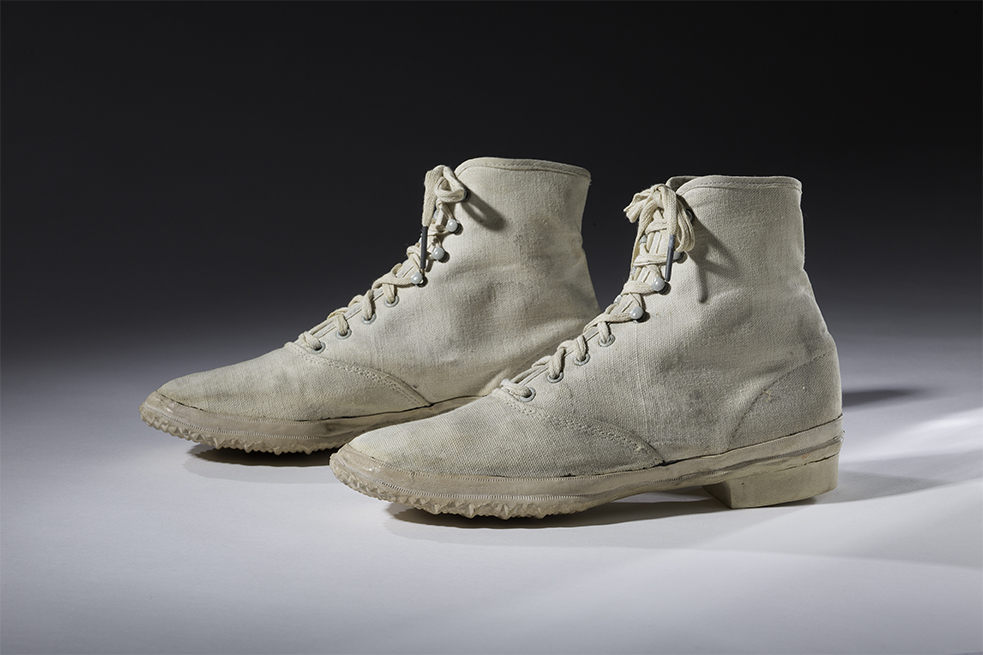From the Vault: Keds Champion sneakers
Take a peek into our 14,000+ collection with our blog series, From the Vault! Every other week, we're sharing interesting stories about one of our artefacts.
What is the provenance of this pair? When did they enter the BSM collection?
This pair of Keds sneakers date to 1916, the first year of Keds’ Champion line. They were acquired by the Museum in 2000
Are there any features that distinguish this pair from other footwear from the same period and geographical location?
What is interesting about this pair of sneakers is not only that they date to the first year that Keds offered their Champion line but that they designed for women. People often think of sneakers and their history as being male-dominated but at the end of the 19th century and into the early 20th century women were widely encouraged to take part in athletic pastimes from tennis to basketball.
Can you elaborate more on the materials used to make this pair?
Sneakers were a 19th century invention directly related to the history of rubber. Rubber is the sap of the Heva brasiliensis tree and was originally found only in the forests of South and Central America. Prior to colonial interest in rubber, which is a remarkable material that is both elastic and waterproof, it had long been used by local people to make everything from waterproof footwear to rubber balls. Westerners were fascinated by its potential but found it hard to work with because it was an unstable material that melted in the heat and cracked in the cold. In 1839, American inventor Charles Goodyear experimented with adding sulphur to boiling latex and found that this helped rubber retain its elasticity while remaining impervious to heat or cold. British scientist Thomas Hancock, inspired by Goodyear’s experiments, further developed the process in England which a friend dubbed vulcanization after the ancient Roman god of fire, Vulcanus. Vulcanization paved the way for many revolutionary consumer items including sneakers. The extremely labour-intensive cultivation process led to the enslavement and exploitation of millions as rubber plants were transplanted around the globe and other latex-related species were also exploited.
Who would have worn this pair and where or for what occasion?
This pair was designed for a woman and were, as a Keds advertisement put it in 1917, ‘equally at home in them on the dance floor, the beach, the boardwalk, the mountain trail, the tennis court, the golf course---anywhere the fashionable fold congregate’ Their high-top style reflects the popularity of lace-up or button boots at this time.





0 comments